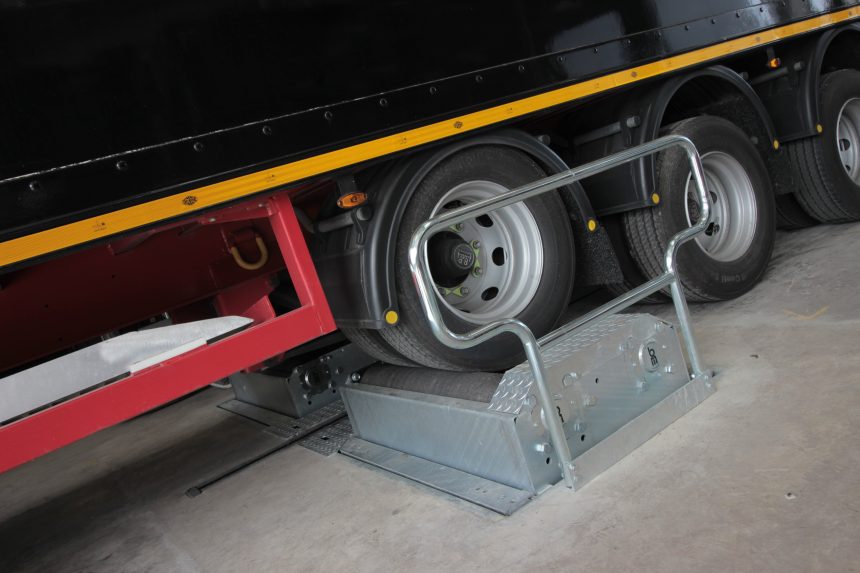If it’s been a few years since you upgraded your brake testers, you might be surprised at some of the advances made.
And if you’ve heard about DVSA’s recent changes, you’ll know that load simulation has become essential to passing your annual tests.
So if you’re looking to refresh your equipment (or you’re setting up a new workshop), load-simulated brake testing is something you can’t ignore.
Here’s what you need to know — and how the different types of load simulation work:
Why do you need load simulations?
Load simulation brake testing is an advanced form of brake testing that’s designed with a simple purpose: To improve the accuracy of your brake tests and the safety of your vehicles.
Standard brake testing can give you an accurate gauge of how your brakes are performing with an empty vehicle. But with a simulated load, you’re recreating the real-world conditions of a fully laden vehicle that’s out on the road.
(And those are the conditions where your brakes matter most!)
That covers the safety aspect. But there’s another reason why every workshop needs simulated brake testing: You’re recreating the conditions of your annual tests.
Earlier this year, DVSA changed the rules around annual brake tests. Most goods vehicles and trailers now need to be ‘appropriately laden’ for their annual tests. And if they’re not, those vehicles could be rejected from their tests.
So if your vehicles need to pass the test while carrying a load, you need your own in-house brake testing to match those same conditions — so you can go into your annual tests with full confidence that your vehicles will pass.
How does it work?
There are lots of different types of load simulation in brake testing. But they all boil down to the same concept:
Applying a precise downward force to your vehicles during the test — so your brakes can be assessed under the same conditions as a laden vehicle.
This normally means applying a force that’s at least 65% of the vehicle’s design axle weight (DAW) to each axle (and not less than 50%).
That could be as simple as loading the right weights onto the vehicle. Or it could mean using an advanced brake tester with dedicated features to simulate those weights.
What types of simulation are there?
If you’re looking for the most efficient and accurate way to simulate loads for your brake tests, you’ll need a dedicated piece of kit that’s designed with load simulation in mind.
And there are four main ways to do it:
1. Axle load simulation
By attaching chains between the axle of your vehicle and the brake tester, you can apply a simulated load directly to the axles of your vehicle. Once you’ve completed the test, you can remove the chains before moving the vehicle.
Axle load simulation works best with our Totalkare Mobile Brake Tester. But it can be a relatively time-consuming approach — so it’s best for workshops that have a lower vehicle throughput.
2. Chassis load simulation
Chassis load simulation is designed for workshops that use an inspection pit — more specifically, for an in-ground brake tester installed over a pit.
With free-rolling skates on rails on the floor of your pit, you can attach special self-tensioning claws on chains to the chassis of your vehicle. These chains can apply a downward force to the underside of your vehicle during the test to simulate the load of a laden vehicle.
It’s fully controllable by remote from the cab of the vehicle. And because the skates move freely along the rails, you can keep the vehicle attached while you move it forward to test different axles — which is a huge benefit to the speed and efficiency of your brake testing.
3. Direct load simulation
Instead of attaching to the axle or the chassis, this method applies forces in a more straightforward approach: With a direct top-down load applied in the same place a laden vehicle would experience it.
That gives direct load simulation an advantage over other methods, since both the suspension of the vehicle and its load sensing valve/function are activated during the test.
Direct load simulation works with a Totalkare In-Ground Brake Tester. But because it requires groundworks, it’s best for new-build workshops, rather than those looking for a retrofit.
4. Hydraulic load simulation
Hydraulic load simulation is a little different. Instead of just applying a downward force, it uses a combination of downward force and upward force.
With a special roller bed installed in an in-ground brake tester, your operators can raise up the roller bed on hydraulic cylinders while simultaneously pulling down with chains attached to the axle. This combination of upwards and downwards forces creates a simulated load.
That covers the basics of load simulation brake testing. But if you’re looking for the full details and tech specs, you can check out our full beginner’s guide to load simulation.
Looking to bring your testing up to scratch?
Load-simulated brake testing isn’t just about getting more accurate tests.
It’s about the safety of your vehicles when they’re out on the road — and making sure each vehicle can pass its annual test with flying colours.
So if you’re looking for an upgrade (or you’re launching a new workshop), take a look at our full range of advanced brake testers — or send your questions to one of Totalkare’s brake-testing experts to get the answers you need.



























